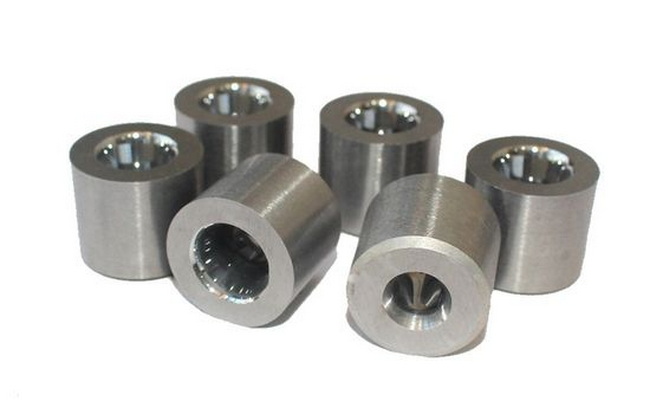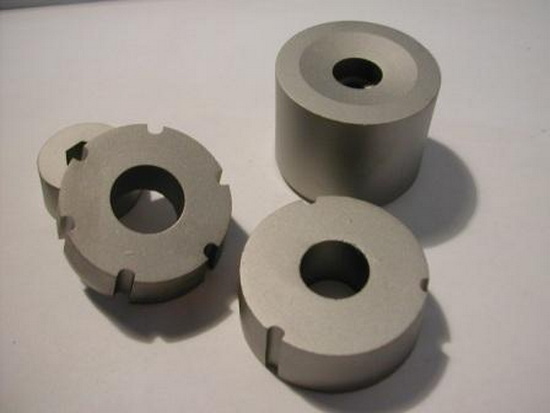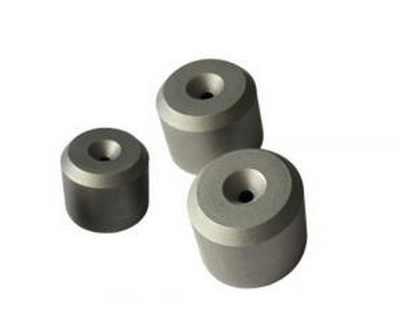Content Menu
● Introduction
● Understanding Carbide Dies
>> Composition and Types of Carbide Dies
>> Comparison with Other Materials
● Benefits of Using Carbide Dies
>> Durability and Longevity
>> Precision and Accuracy
>> Versatility
● Technological Advancements in Carbide Die Production
>> Impact of Technology on Die Performance
>> Future Trends in Carbide Die Technology
● Case Studies
>> Successful Implementations of Carbide Dies in Manufacturing
>> Testimonials from Industry Leaders
>> Analysis of Productivity Improvements
● Conclusion
● Related Questions
>> Q1. What materials can carbide dies be used with?
>> Q2. How do carbide dies compare to steel dies in terms of cost?
>> Q3. What industries benefit the most from using carbide dies?
>> Q4. Can carbide dies be customized for specific applications?
>> Q5. What advancements are being made in carbide die technology?
Introduction
Carbide dies are essential tools in the manufacturing industry, known for their durability and precision. These dies are made from tungsten carbide, a material that is significantly harder than steel, making them ideal for various applications, including stamping, molding, and cutting. The importance of carbide dies in modern manufacturing cannot be overstated, as they enhance productivity, reduce costs, and improve the quality of finished products. This article will explore the key benefits of using carbide dies, particularly focusing on their applications in Birmingham and the surrounding areas, where many manufacturers rely on these tools for their operations.
Understanding Carbide Dies
Carbide dies are specialized tools used in manufacturing processes to shape, cut, or form materials. They are made from a composite of tungsten and carbon, which gives them exceptional hardness and wear resistance. There are various types of carbide dies, including stamping dies, extrusion dies, and injection molding dies, each designed for specific applications.

Composition and Types of Carbide Dies
The primary component of carbide dies is tungsten carbide, which is a compound of tungsten and carbon. This material is known for its high density and hardness, making it suitable for high-stress applications. There are several types of carbide dies, including:
- Tungsten Carbide Stamping Dies: Used for shaping metal sheets into desired forms.
- Extrusion Dies: Employed in the extrusion process to create continuous shapes from materials like plastic and metal.
- Injection Molding Dies: Used in the injection molding process to produce complex shapes from molten materials.
Comparison with Other Materials
When compared to traditional steel dies, carbide dies offer several advantages. While steel dies are less expensive, they wear out more quickly and require frequent replacements. In contrast, carbide dies, although initially more costly, provide a longer lifespan and better performance, ultimately leading to lower production costs over time.
Benefits of Using Carbide Dies
Durability and Longevity
One of the most significant benefits of using carbide dies is their durability. Carbide dies can withstand extreme conditions, including high temperatures and pressures, without losing their shape or effectiveness. This resistance to wear and tear means that manufacturers can rely on carbide dies for longer periods, reducing the need for frequent replacements and maintenance.
Precision and Accuracy
Carbide dies are renowned for their precision and accuracy. In industries where tolerances are critical, such as aerospace and automotive manufacturing, the ability to produce parts with exact specifications is essential. Carbide dies can achieve tight tolerances, ensuring that each part produced meets the required standards. This precision not only improves the quality of the final product but also reduces waste and rework, leading to increased efficiency in the manufacturing process.
Versatility
Carbide dies are incredibly versatile and can be used in various manufacturing processes. Whether it's stamping, molding, or cutting, carbide dies can adapt to different materials, including metals, plastics, and composites. This versatility makes them an invaluable tool for manufacturers looking to streamline their operations and reduce the number of different tools required for various processes.
Technological Advancements in Carbide Die Production
The production of carbide dies has seen significant advancements in recent years. Innovations in manufacturing techniques, such as computer numerical control (CNC) machining and additive manufacturing, have improved the quality and performance of carbide dies. These technologies allow for more complex designs and greater precision in the production process.
Impact of Technology on Die Performance
Modern manufacturing technologies have enhanced the performance of carbide dies. For instance, advanced coating techniques can be applied to carbide dies to improve their wear resistance and reduce friction during the manufacturing process. These coatings can significantly extend the lifespan of the dies, making them even more cost-effective for manufacturers.

Future Trends in Carbide Die Technology
As technology continues to evolve, the future of carbide die production looks promising. Emerging trends include the use of artificial intelligence and machine learning to optimize die design and production processes. These advancements will likely lead to even greater efficiencies and capabilities in the manufacturing sector.
Case Studies
Successful Implementations of Carbide Dies in Manufacturing
Many manufacturers in Birmingham and beyond have successfully implemented carbide dies in their operations. For example, a local automotive parts manufacturer reported a 30% increase in production efficiency after switching to carbide dies. The durability and precision of these dies allowed them to produce higher-quality parts with fewer defects.
Testimonials from Industry Leaders
Industry leaders have praised the benefits of carbide dies. A representative from a leading aerospace company noted that the use of carbide dies has significantly improved their production capabilities, allowing them to meet the stringent requirements of the aerospace industry.
Analysis of Productivity Improvements
The switch to carbide dies has led to measurable productivity improvements across various sectors. Manufacturers have reported reduced downtime due to fewer die changes and repairs, resulting in increased output and profitability.
Conclusion
In conclusion, carbide dies are a vital component of modern manufacturing, offering numerous benefits that enhance productivity, reduce costs, and improve product quality. Their durability, precision, and versatility make them an ideal choice for manufacturers in various industries. As technology continues to advance, the capabilities of carbide dies will only improve, further solidifying their place in the manufacturing landscape.

Related Questions
Q1. What materials can carbide dies be used with?
Carbide dies can be used with a variety of materials, including metals, plastics, and composites, making them versatile tools for different manufacturing processes.
Q2. How do carbide dies compare to steel dies in terms of cost?
While carbide dies have a higher initial cost than steel dies, their durability and longevity often result in lower overall costs due to reduced maintenance and replacement needs.
Q3. What industries benefit the most from using carbide dies?
Industries such as automotive, aerospace, and electronics benefit significantly from using carbide dies due to their need for precision and high-quality manufacturing.
Q4. Can carbide dies be customized for specific applications?
Yes, carbide dies can be custom-designed to meet the specific needs of different manufacturing processes, allowing for greater flexibility and efficiency.
Q5. What advancements are being made in carbide die technology?
Advancements in technology, such as CNC machining and advanced coatings, are improving the performance and lifespan of carbide dies, making them even more effective for manufacturers.
















